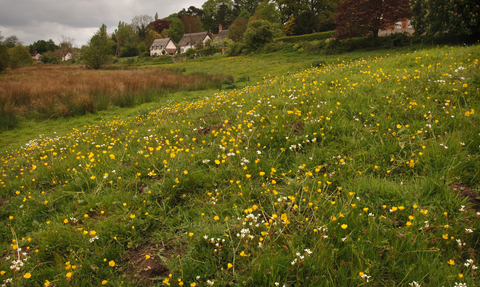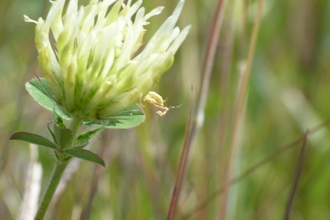
Claylands landscape (credit: M. Watson)
On your land
A wealth of information is available to landowners and land managers on managing land for nature. Advice generally focuses on how to manage habitats, such as grasslands, ponds, woodlands or hedgerows. Such advice is certainly important, but are there other considerations before undertaking habitat management?
Species data
It is essential to consider which species are already present on your land and in the surrounding area. Certain species, such as great crested newts, are protected by law and need to be considered in land management decisions. Other species are scarce; so managing land sympathetically can help their fragile populations. Scarce species which are mobile should be considered both on your land and in the surrounding area. For example, if turtle doves are present within a 10-mile radius, habitat improvements on your land could benefit them. Less mobile species, such as lichens and many invertebrates, have to colonise new areas of habitat much more incrementally.
Connectivity mapping
Recovering nature in Norfolk will require coordinated action at a landscape scale. Many habitats have been fragmented, both through significant habitat loss over the past century, and by infrastructure, such as new roads. We need to link remaining areas of high quality habitat so species can move through the landscape. This helps to create more robust populations and ecological networks.
To assist land management planning, Norfolk Wildlife Trust has created connectivity mapping tools which allow landowners to consider ecological connectivity. See our Connectivity Mapping page for details.
Habitat management
Managing habitats appropriately is vital, both to maintain the condition of existing wildlife-rich habitats and to enhance newly created habitat and linkages.


